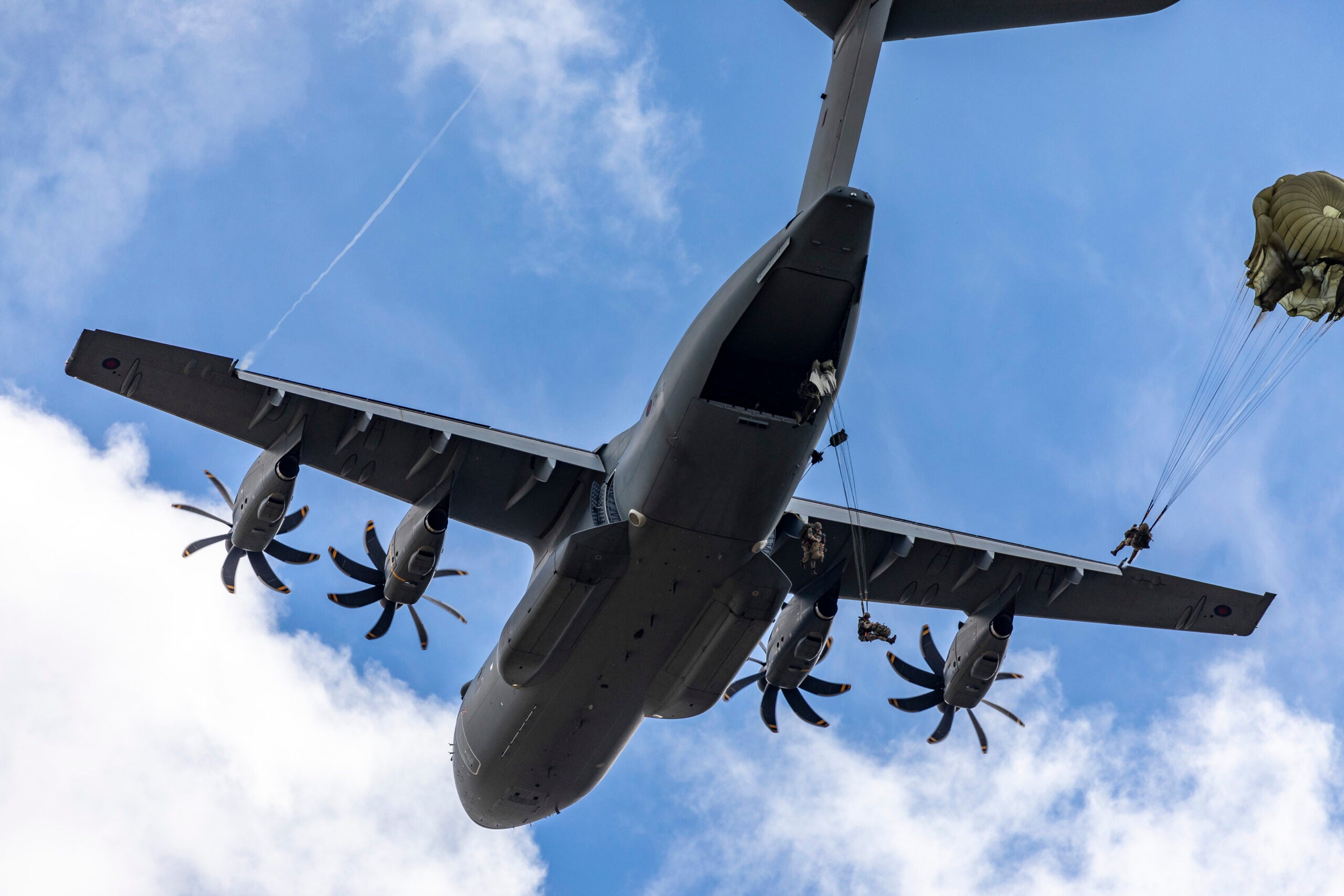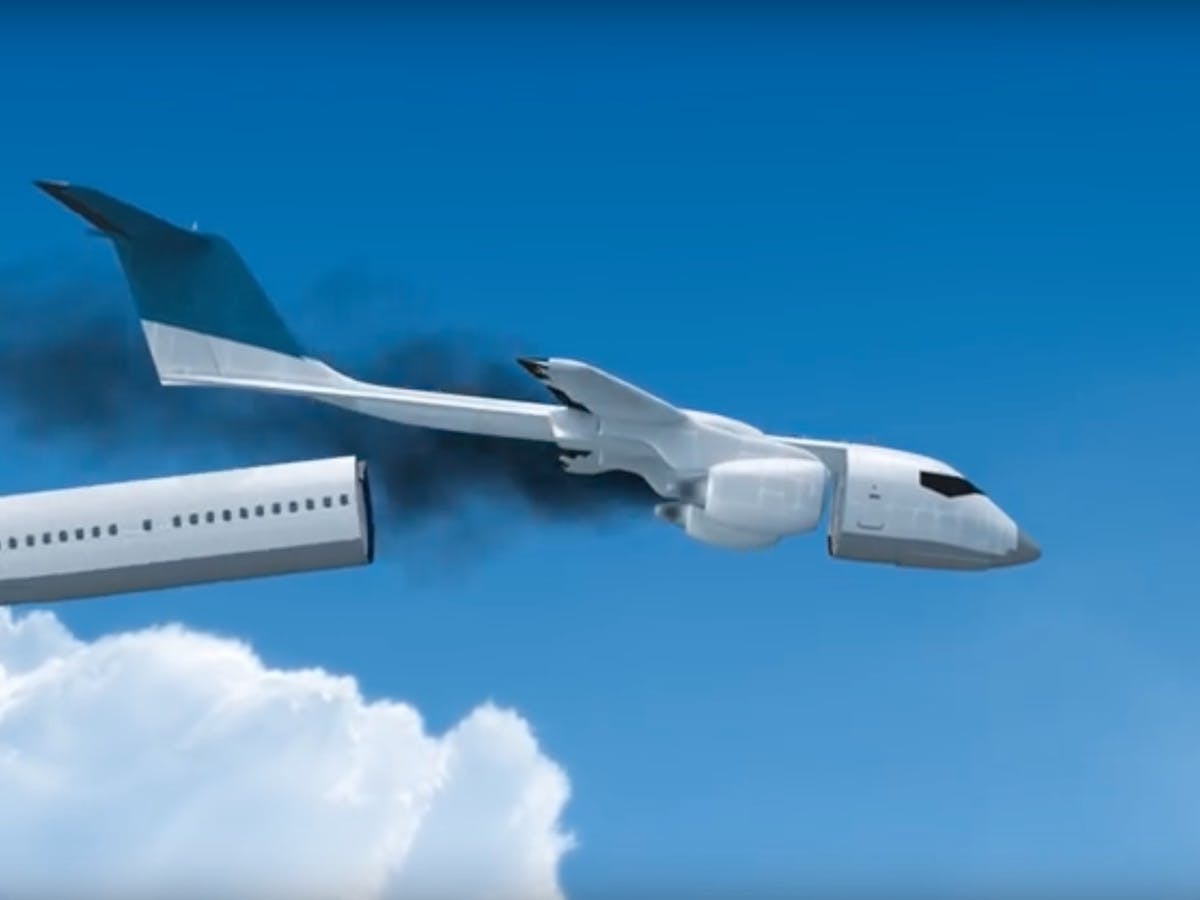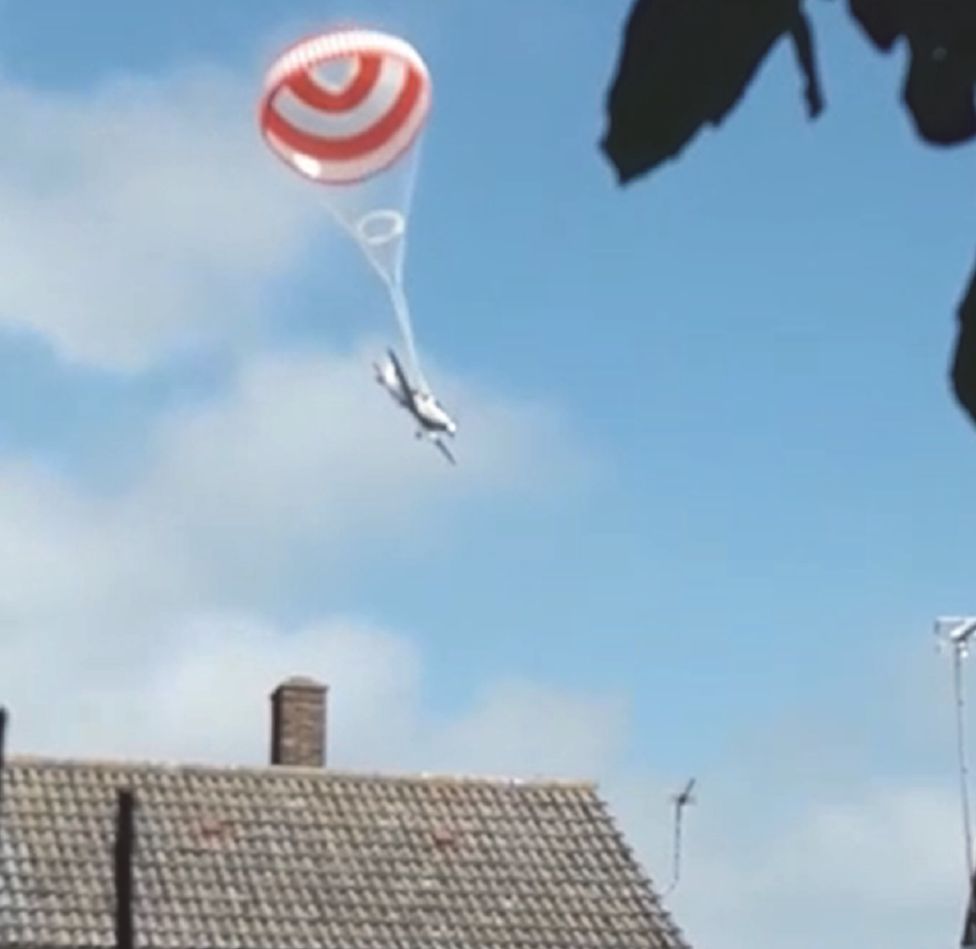Aircraft With Parachute - The idea of an electric urban air mobility (UAM) parachute is a double-edged sword in aviation. Electric multirotor vertical takeoff and landing (eVTOL) aircraft are inherently safe, but they are still in the air, so additional safety precautions must be taken. However, conventional parachutes can only work at certain altitudes. Aviation Safety Resources (ASR)—a leading parachute safety organization that won one of the Revolution.Aero competitions earlier this year—says it has a parachute system that will work with eVTOL aircraft at low altitudes.
I recently spoke with Larry Williams, CEO of ASR, about how the company's parachute technology works, how it is applied to eVTOL aircraft, and the public's perspective.
Aircraft With Parachute

Aiming to disrupt the market for existing aircraft recovery systems and safety solutions for the next generation of manned and unmanned flights, ASR aims to make urban air mobility (UAM) even safer. Williams says that standard recovery systems cannot work for eVTOL aircraft in the critical "vertical" phase (no forward speed). Most canopies only work on fixed wing aircraft and canopy inflation depends on forward speed. This is why helicopters don't have parachutes. They can turn against each other if they are down at the right height in time and land as safely as possible.
Parachute Stock Illustration
In the case of fixed-wing aircraft, when parachutes are deployed in flight, they first slow the aircraft – tightening and slowing the descent to ensure landing conditions. With the success of the entire aircraft rescue system, which has saved over 500 people worldwide so far, we are starting to see parachutes seem more 'standard'. The Pipistrel uses the head at the top of the cock, to the right where the wings are attached to the whisker.
The problem with traditional parachutes is that they take time to inflate. They need sufficient height and speed to fulfill their purpose. Even using rockets to quickly pull the canopy out, it won't rise in time if it's low to the ground. For example, the Cirrus needs to be 920 feet in the air for its canopy to be fully illuminated, which an eVTOL cannot do at 500 feet for takeoff or landing in a populated area. If an airplane is traveling at 122 mph and falling 179 feet per second, it takes 5.5 seconds to inflate. ASR circumvented this limitation with an innovative, patented solution that takes half a second to retract the canopy and a further 2 seconds to inflate it. The ASR parachute operates at 100 feet or less in less than 2.5 seconds even in VTOL operation.
Williams says it's an attached retro rocket that ignites and slows down the plane's descent, and some small parachutes are recovered using band-aid rockets that inflate during recovery so they don't rely on loss of altitude. This results in deceleration below 30 feet per second, providing a safe and sustained landing. It is a passive safety system installed in the UAM vehicle design, similar to a car airbag.
Williams told me that tomorrow's UAM needs require a new look at recovery technology with a specific design approach to eVTOL. ASR has designed a new range of next-generation recovery products that are lighter, smaller in volume and offer longer repack cycles than any similar products on the market today. Williams spent the first half of his career working on airplane crashes and said, "We may not be able to prevent total failure, but we can prevent many deaths."
High Quality 6 8kg Model Aircraft Nylon Parachute Ejection Umbrella With Lanyard For Fpv Outdoor Drone Uav Landing Protection
Public perception is important for the adoption of modern electric UAMs. The University of Michigan came up with a study that showed 80% of respondents said they would need a parachute when flying an eVTOL. The concept of a parachute-like rescue system also has a marketing element. Williams thinks the public's attitude is ready for parachutes, and says ASR has been working in the aviation safety industry for years to help add another layer of safety to already impressive electrical reliability. An ASR parachute on a 4500 lb aircraft weighs only 100 lb - estimate that a 100 lb parachute could save 6 lives.
But what about rotorcraft like helicopters and gyroscopes? Williams told me that his system can be deployed from the side of the aircraft and not necessarily from the top of the elevator rotor. The ASR system would not crack or break from the impact of the rotor gear with reinforced kevlar technology that could withstand the impact of the gear.
ASR aims to revitalize and reinvent the aviation safety industry with a series of new products targeting sport/experimental aircraft, light sport aircraft (LSA), general aviation (GA) aircraft, and VTOL and eVTOL aircraft. These systems will include unmanned aerial systems (UAS) and unmanned aerial vehicles (UAV). Williams told me that ASR wants to be the first to meet the security needs of the emerging UAM market.

I left feeling that I know more about something as simple as a parachute, but which is much more than meets the eye.
Meet Bye Aerospace's All Electric Twin Turbo Prop 'eflyer 800™', That Comes With A Full
It uses a rocket-powered parachute that propels the canopy high enough to fully open. Although all eVTOL and electric fixed-wing projects focus most of their research on safety, they would not suffer from this extra layer of security.
Do you appreciate innovation and reporting on clean technologies? Consider becoming a member, supporter, technology or ambassador - or patron on Patreon.
Don't want to miss a clean tech story? Sign up for daily email updates. Or follow us on Google News!
Have a tip for , want to advertise or want to recommend a guest for our CleanTech Talk podcast? Contact us here.
Cirrus' $2 Million Vision Jet Now Lands Itself, No Pilot Needed
In this article: Aircraft (electric), aviation, electric aviation, electric vertical take-off and landing, eVTOL, safety, UAM, University of Michigan, unmanned aircraft, urban air mobility, VTOL
Nicolas was born and raised around the classic cars of the 1920s, but it wasn't until he was driving an AC Drive eBox and a Tesla Roadster that the light came on. Since 2007, he has been producing material for ecological mobility at various CleanTech outlets and found his home at . Growing up in an international environment, his passion for communication has led to coverage of electric vehicles, autonomous vehicles, renewable energy, test drives, podcasts, photoshoots and film for various international print and online outlets. Nicolas gives a deep insight into the world of e-mobility through interviews and the many contacts he has made in these industries. His favorite slogans are: "There are more solutions than obstacles." and "The Future of Yesterday Now"
The failure of the FAA's NOTAM system is a reminder that while the benefits of DATC are clear, the path to full implementation and adoption...

The American company ZeroAvia is one step closer to the launch of its zero-emission electric aircraft powered by hydrogen fuel cells.
Military Parachutist Paratroopers Jumping Out Of An Air Force Airplane Editorial Stock Photo
That SUV or crossover you bought to keep your kids safe may not be as safe as you thought — and the IIHS just…
Archer Aviation eVTOL Manufacturer successfully completed the first ever "transition flight" where the aerotaxi prototype was able to make a full transition from ... A pretty wild video was shared with me in the internal Autopian Slack chat room. The plane crashed in Belgium, but the pilot literally walked away from the wreckage. This is thanks to the ballistic parachute system, which could be a terrible fall in something much less violent.
Details on this particular accident are pretty thin right now, but we do have some information. On July 15, an ultralight aircraft was flying over Sint-Andries, Belgium, when an emergency occurred, reports the VRT NWS news site. It is not clear at this time what the emergency was about, but the pilot used a potentially life-saving device.
The plane and its pilot then, thanks to the plane's full life parachute system, came into effect quite gently on the road. It was chosen by paserby, and it's easy to see why it's making it online:
Watch: Stunning Video Shows Aircraft Hanging From Parachute Moments Before Crash, Pilot Survives
Some people commenting on social media believe that the aircraft in question is a Cirrus SR22. It's a good guess, but it's on a different level.
I'll explain why people think it's Cirrus. Here in the United States, whole aircraft parachute systems are known in part because of their implementation in Cirrus aircraft. These planes are extremely clever in their design. In an emergency, the pilot of the Cirrus SR20, SR22 and Vision SF50 can pull a red handle that activates the Cirrus Airframe Parachute System (CAPS).
When the pilot pulls the handle, it fires a rocket that deploys the plane's parachute. About 45 pounds of grip force is required to start the rocket ignition process. This is in part so you don't blow out on a hard landing. This is what rockets look like.

BRS Aerospace, a ballistic parachute system manufacturer and supplier to Cirrus, says its rockets accelerate to over 100 mph in the first tenth of a second after ignition. And the entire shooting sequence takes only seconds. For the Cirrus, it is designed to bring the aircraft into a significant level of descent at its
Skydiving Altitude & Airplanes
Single engine aircraft with parachute, cirrus aircraft parachute system, small aircraft with parachute, light aircraft with parachute, aircraft parachute system, light sport aircraft with parachute, ultralight aircraft with parachute, aircraft parachute recovery system, light aircraft parachute system, powered parachute aircraft, small aircraft parachute recovery system, aircraft with parachute system